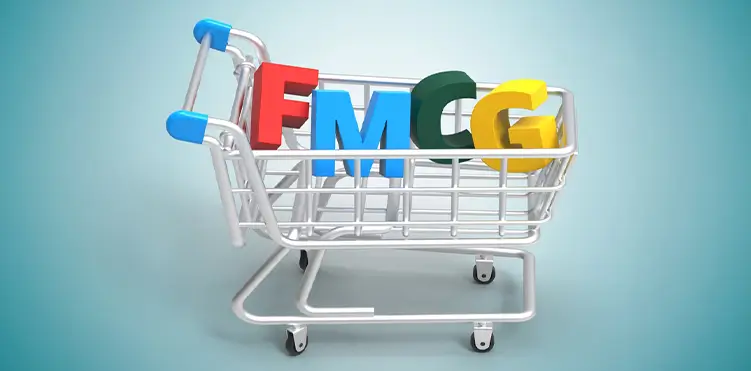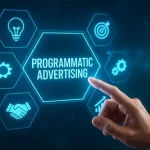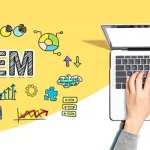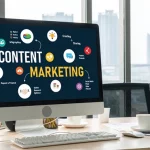We see a majority of product launches struggling, making the odds appear against new entrants. Yet some brands cut through all the clutter, gain momentum, and become common names in every household. So, are there certain techniques with which a new FMCG product can succeed in an ocean of very similar products? With consumer share divided between millions of channels and very little shelf space in a competitive market, this is the million-dollar question all brands launching a Fast-Moving Consumer Goods (FMCG) product must solve. What is it that those successful brands are getting right? And how can others replicate this seemingly elusive equation? This blog delves into the building blocks of an effective FMCG marketing strategy, guiding you step by step from idea to launch and beyond.
Building a Future-Ready FMCG Marketing Strategy
An effective FMCG marketing strategy does far more than flashy packaging and catchy tunes. It begins with understanding the customer base: what drives them, their pain points, and what they’re looking for that they can’t find anywhere else. Smart FMCG marketing starts with understanding:
- Target audience demographics, psychographics, and purchasing behaviours
- Ability of the product to solve pain points
- Competitive landscape
- Market size and growth prospects
- Price sensitivity levels
A successful FMCG marketing strategy takes a 360-degree approach, combining traditional outreach with the latest digital innovations. And that’s where ODigMa comes in. As a trusted digital marketing agency in Bangalore, we help leading FMCG brands develop data-driven, market-specific campaigns that resonate.
Key Factors to Leverage in FMCG Marketing
Marketing your product at the right time, i.e., festival or festive seasonal demand, can be a huge multiplier for sales. Incremental innovation in ingredients, packaging, or usage can drive differentiation. FMCG is about cultivating a connection and trust with the brand. An entertaining narrative can convert even the unpretentious commodity into a necessity for a certain style of living. An intelligent FMCG marketing plan isn’t set. It keeps on evolving as per feedback, modulates per trend, and paces itself for contemporariness.
Data and Consumer Insights
Before investing a single rupee in promotion or production, drill down into consumer insights. Why do customers prefer one brand over another? What price levels cause resistance? Which colours or fragrances have greater appeal?
Data is oxygen for FMCG marketers these days. We, at ODigMa, leverage the might of smart analytics and social listening to break the code in terms of behavioural patterns, purchase stimuli, and product requirements. Through polls, online opinion monitoring, or A/B tests, data collection lies at the heart of modern FMCG marketing. Such data intercepts allow brands to move beyond broad demographic targeting towards precision marketing aimed at engaging people when they are most open to communications.
Branding and Positioning
You may have the best product in the world, but without sharp branding, it can just get lost in the sea of similarity. Your positioning needs to:
- Create visual recognition immediately
- Communicate your value proposition within seconds
- Establish emotional connections with customers
- Differentiate from competitors with unique brand assets
- Be consistent everywhere
“Brand consistency across physical and digital touch points creates the recognition required for split-second buying decisions typical of FMCG categories,” explains ODigMa branding experts. This visual shorthand is particularly significant in fast-moving consumer goods, where consumers have a moment to make a decision.
Promotional Content
FMCG goods exist on visibility and awareness. Your messaging for the campaign must strike a balance between informative and engaging. It should not only show what the product is but also how it matters to the buyer. Effective promotional messaging includes:
- Short-form videos showcasing product benefits
- User-generated content with real-life stories
- Informative content on product usage and the know-how
- Lifestyle photography positioning products in aspirational scenarios
In-Store Strategies
While digital presence is crucial, never underestimate the power of physical shopping experiences. Shelf positions, in-store promotion, point-of-sale branding, and packaging design are still FMCG marketing game-changers. Within your in-store strategies, include:
- Strategic shelf placement and merchandising
- Sampling programs to stimulate trial
- Bundle promotions to drive basket size
- In-store digital integration (QR codes, AR experiences)
Remember that the most effective FMCG marketing strategies combine online engagement and in-store activation into an omnichannel experience that touches shoppers wherever they are.
Loyalty Programs
FMCG products have short usage cycles, so loyalty becomes even more critical. Develop simple, value-based loyalty schemes that reinforce frequent repurchase. Try:
- Digital-based loyalty programs that encourage repeat purchases
- Targeted promotions based on previous purchases
- Community building around product ranges
- Subscription models for day-to-day products
- Access to special products for a loyal base
Marketing Trends In FMCG To Watch Out For
As the FMCG marketing environment only continues to evolve, it becomes essential for brands to form the correct identity and to remind consumers about their presence. Below are some impactful trends to watch out for that could be integrated into winning strategies:
Sustainability Integration: Environmental concern has moved from niche streams to mainstream expectations, awarding brands that incorporate new sustainable packaging, ethical supply chain practices, carbon footprint reduction initiatives, and being transparent about their environmental impact.
Direct-to-Consumer Channels: While traditional retail remains important, more and more FMCG brands are building direct relationships with consumers through branded e-commerce websites, product subscription services, community platforms for content, direct feedback loops for product innovation and personalised shopping experiences.
AI-Powered Personalisation: AI is upgrading FMCG marketing’s capacity to target and engage consumers in much newer ways, including anticipatory marketing using predictive analytics, dynamic pricing optimisation, personalised product recommendations, automated content customisation and voice commerce integration.
Social Commerce Integration: Considering how social sites have evolved from awareness platforms to end-to-end buying spaces, leveraging the e-commerce capability of these platforms forms an added advantage. Experiment with frictionless shopping posts, shoppable influencer collaborations with direct purchase links, live shopping sessions with product demonstrations, community-driven recommendation engines and user-generated content that drives conversion.
Hyper-Local Marketing Strategies: Global FMCG players, too, are reaping success with localised approaches, such as geo-targeted digital campaigns, region-restricted product formats, local influencer collaborations, community initiative programmes and market-oriented packaging and messaging.
Real-World FMCG Marketing Examples
Oatly’s Disruptive Brand Voice
FMCG marketing was disrupted by the plant-based milk brand in a mature category with offbeat packaging, transparent ingredient communication, and boldly challenging industry norms. Their playbook proved that even in mature FMCG categories, a distinct brand personality can drive growth.
PepsiCo’s Sustainable Transformation
Supporting the evolving consumer habits, PepsiCo’s FMCG advertising increasingly centres around the brand’s sustainable journey, including compostable pack innovations, carbon reduction commitments, and water conservation efforts. In doing so, they appeal to the eco-conscious consumer while future-proofing their brand reputation.
Testing, Feedback & Continuous Improvement
Every marketing material is on track, and the product launch was successful. Well, now what? Post-launch is not a time to take it easy. You have to test, analyse and adapt your communication strategies constantly to verify whether they deliver results.
Concept tests, A/B tests, taste tests, and packaging surveys optimise your product and message. Post-launch performance metrics such as customer satisfaction rates, repeat purchase rate, and social media sentiment are then fed into the next iteration of your product or campaign.
This is where most brands fail. But with the help of digital marketing agencies such as ODigMa, your FMCG marketing campaigns stay future-proofed and feedback-driven with performance monitoring and marketing analytics expertise.
What’s The Verdict?
The failure rate of new FMCG products testifies to the challenging nature of this sector, but at the same time, signals the unprecedented ways for brands to get their FMCG marketing strategy correct. Brands that find the balance between adapting to changing market trends can position themselves for not only product success but also category dominance.
And if you wish to do it all with clarity, strategy, and measurable results, ODigMa is here to help. We’ve helped brands across various industries plan, launch, and grow with confidence. From digital campaigns to omnichannel execution, we give you the tools, the talent, and the track record to deliver. Visit ODigMa’s website to hear our success stories and contact us for tailor-made strategies that pay off.


 Digital Marketing For Doctors In India
Digital Marketing For Doctors In India A Comprehensive Guide to Programmatic Advertising (2025)
A Comprehensive Guide to Programmatic Advertising (2025) How to choose the Best Search Engine Marketing (SEM) agency in Bangalore
How to choose the Best Search Engine Marketing (SEM) agency in Bangalore Social Media Marketing for Healthcare: The 5 Step Plan
Social Media Marketing for Healthcare: The 5 Step Plan Content Marketing for Startups: Building Brand & Driving Growth on a Budget
Content Marketing for Startups: Building Brand & Driving Growth on a Budget